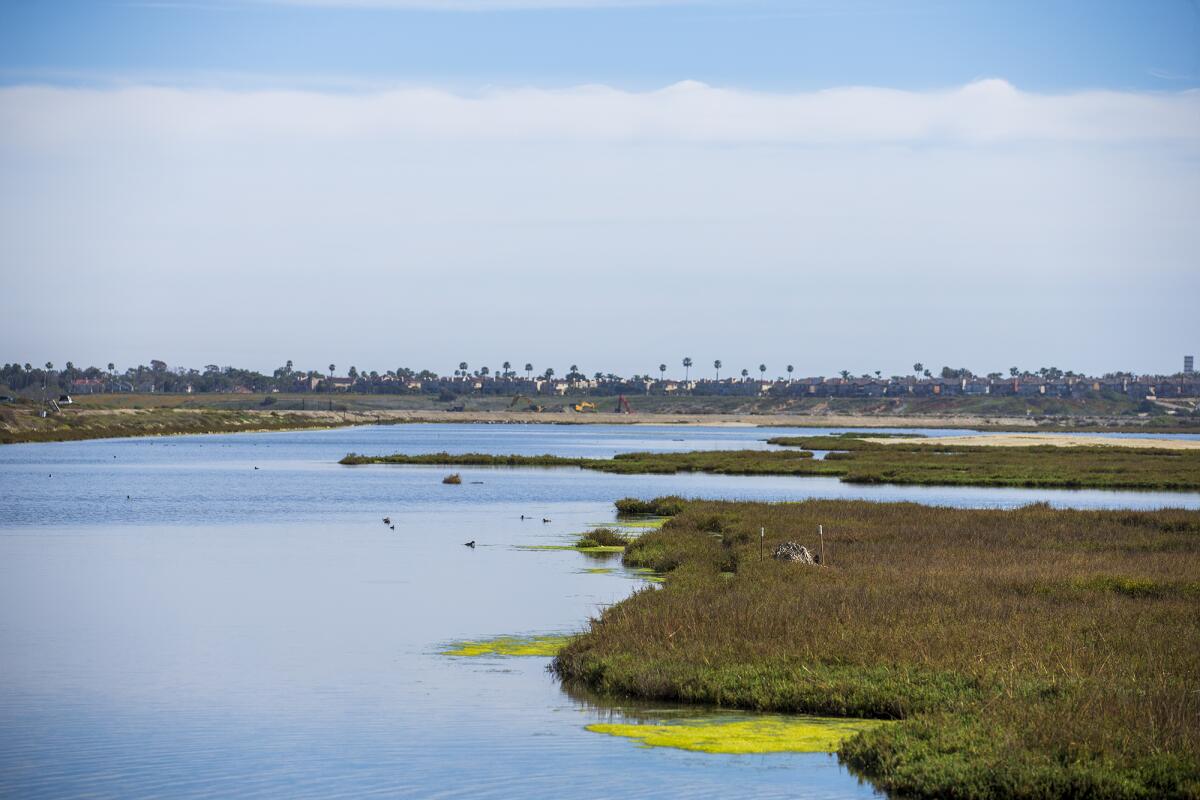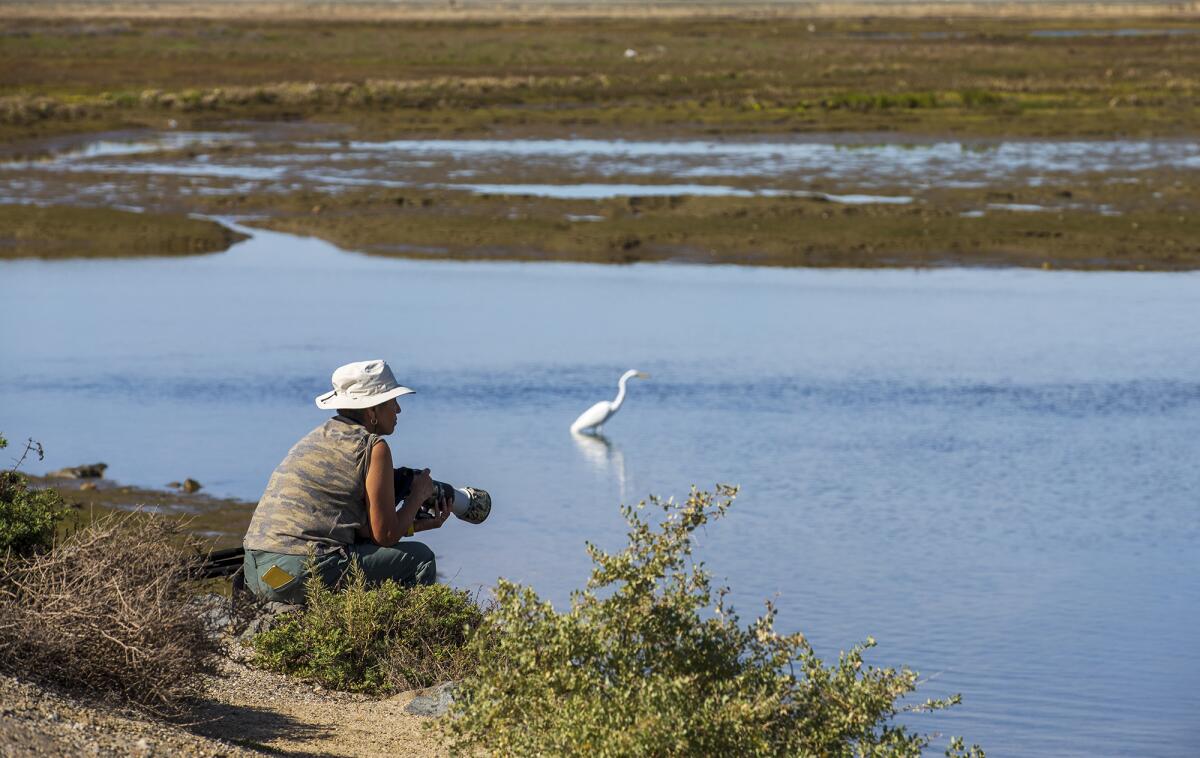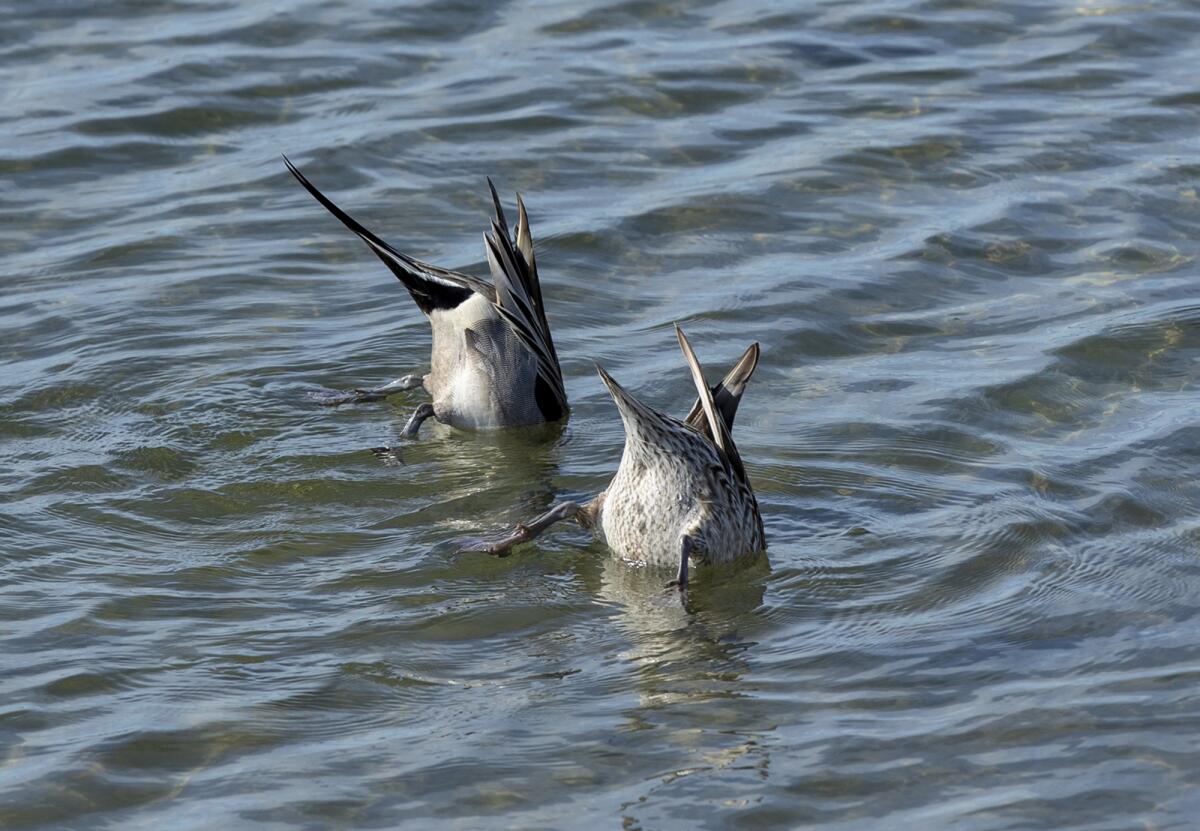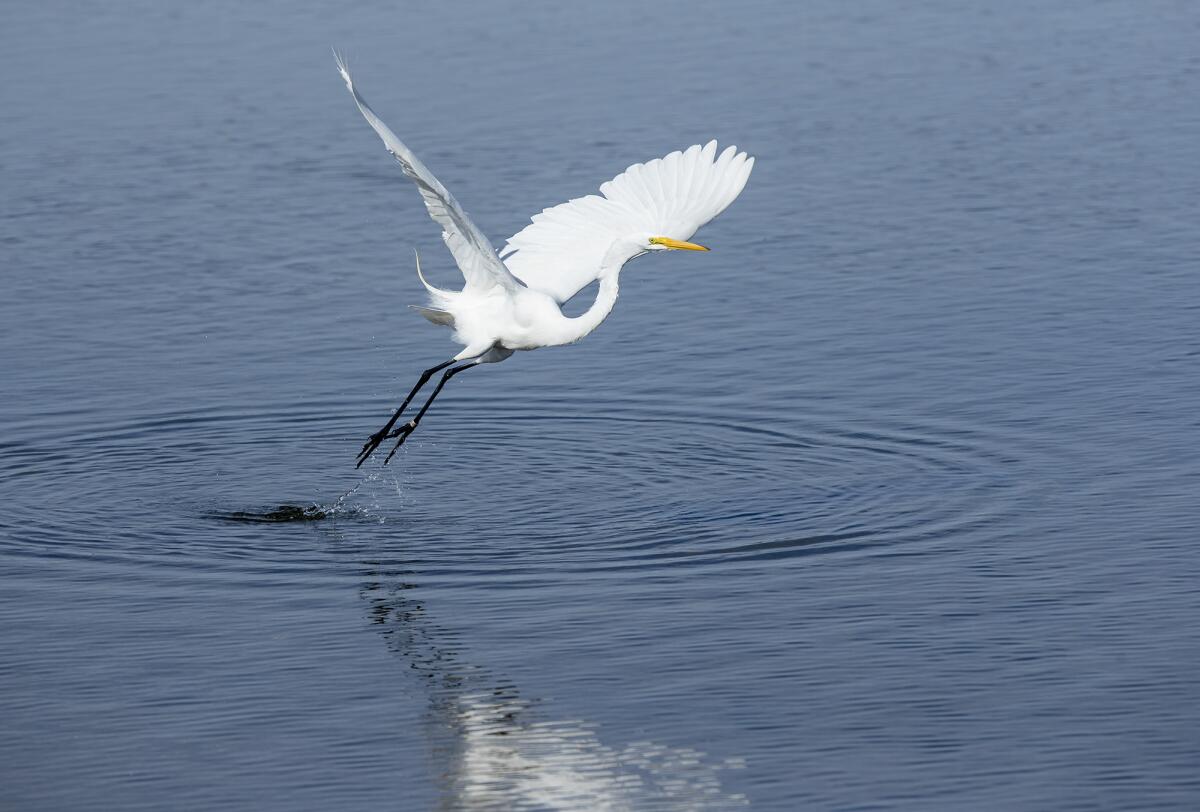Bolsa Chica wetlands in need of significant restoration to maintain sensitive ecology, study finds

- Share via
The Bolsa Chica Ecological Reserve, a saltwater marsh home to sea creatures and breeding grounds for birds, is in need of significant restoration in order to maintain and preserve its sensitive ecology, according to a recent study.
In the 462-page report published by Anchor QEA, an environmental science and engineering consulting firm, several solutions were provided to help address issues related to sedimentation, water management, sea level rise and the overall health of Bolsa Chica lowlands in Huntington Beach.
Short-term solutions include continuing maintenance dredging to remove sedimentation in the wetlands and pumping to control water levels, which would reduce the loss of vegetated marsh and remove stormwater to create an ideal bird habitat.
Looking forward to 2060 and 2100, the report recommends raising ground elevations within the muted tidal basin to serve as a buffer with high surface water levels and reducing the amount of water available to increase groundwater seepage.
“Given that [sea level rise] will continue to negatively affect Bolsa Chica at a rate greater than most other coastal wetlands due to low ground elevations caused by oil extraction-induced subsidence, it is prudent to pursue large-scale [sea level rise] adaptations as soon as possible since these adaptations would likely take time to implement,” the report stated.
Now, the Bolsa Chica Steering Committee, composed of representatives of state and federal agencies that oversee the area, will choose how to move forward, including whether certain proposals require more studying before going through necessary permitting process.

Human intervention altered the sensitive ecology of the roughly 1,300 acres decades ago. It was once used as a hunting reserve and oil field and, at one point, almost 6,000 homes were proposed near and partly on the wetlands.
“It’s basically out in the open,” said Kim Kolpin, executive director of the Bolsa Chica Land Trust. “So you can see, you can understand what’s going on out there.”
The first major restoration project occurred in 2006 when engineers reconnected the 367-acre tidal basin with the ocean, allowing seawater to flow directly into the marsh and bring back sea creatures to their habitat after duck hunters created a barrier.
“It takes a village to restore and maintain these wetlands,” Kelly O’Reilly, formerly of the California Department of Fish and Wildlife, told the Daily Pilot in 2016.
Kolpin said she had an inkling of the amount of additional work required on the wetlands because O’Reilly, a former reserve manager for Bolsa Chica, sounded the alarm when a pot of money remaining for the ’06 restoration was running out faster than anticipated..
Kolpin realized how grave the issues were as she heard from other groups monitoring the habitat.
Ultimately, it’s why the the Bolsa Chica Land Trust, a nonprofit established in 1992, partnered with the Bolsa Chica Steering Committee to secure a grant for roughly $325,000 from the California Department of Fish and Wildlife to fund a study that would ascertain just how deep these issues were. .
Although there was hope the study would offer a straightforward solution, Kolpin acknowledges this undertaking isn’t easy — or cheap.
“We have to look at the system in short- and long-term ranges because it is now pretty much a manmade system,” Kolpin said. “There were wetlands there historically, of course, but when the oil extraction and the roads and the dams and everything got cut off from the ocean happened, that was a significant break. And whereas we have now reconnected it to the ocean and removed a lot of that infrastructure, it’s not exactly as Mother Nature designed it.”

In the last year alone, the landscape has been severely altered.
A drone crash-landed into nesting grounds where about 3,000 elegant terns fled, leaving behind 1,500 to 2,000 eggs that couldn’t be saved. It was the largest egg abandonment scientists who work there could recall.
Months later, a massive oil spill sent thousands of gallons of crude into Huntington State Beach, which sent environmentalists rushing to place booms at the reserve’s tidal inlet. The wetlands were spared, but the oil seeped into Talbert Mash, a smaller wetlands in Surf City.
In addition to supporting 23 species listed by the state or federal government as endangered, threatened or of special concern, the wetlands are a popular spot for birdwatchers and photographers. Nearly half of the birds found in the United States have been seen in the area, according to the Bolsa Chica Conservancy.
“These are all species that have been pushed to the brink because of the urban stress of development along California’s coastline,” Kolpin said. “We have to realize it’s not all about us. We need our animal kingdom in order to thrive.”

All the latest on Orange County from Orange County.
Get our free TimesOC newsletter.
You may occasionally receive promotional content from the Daily Pilot.




